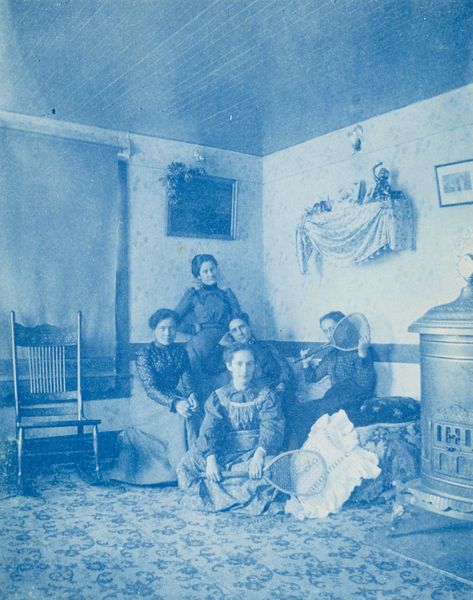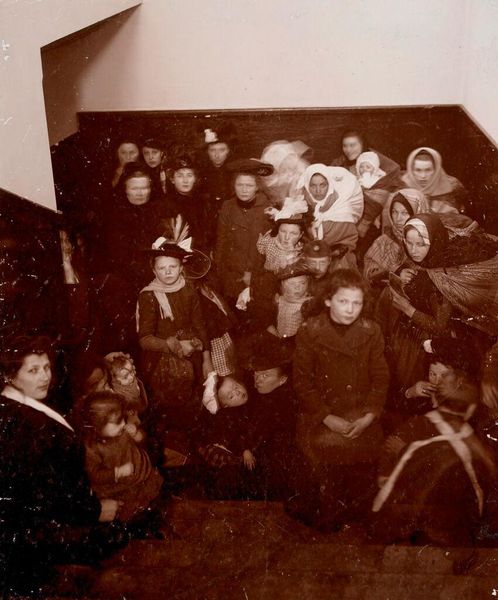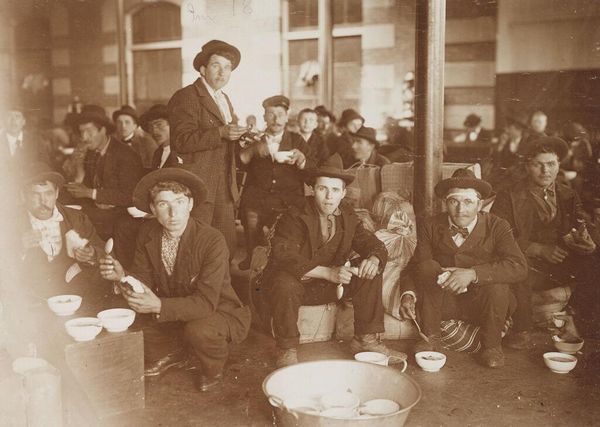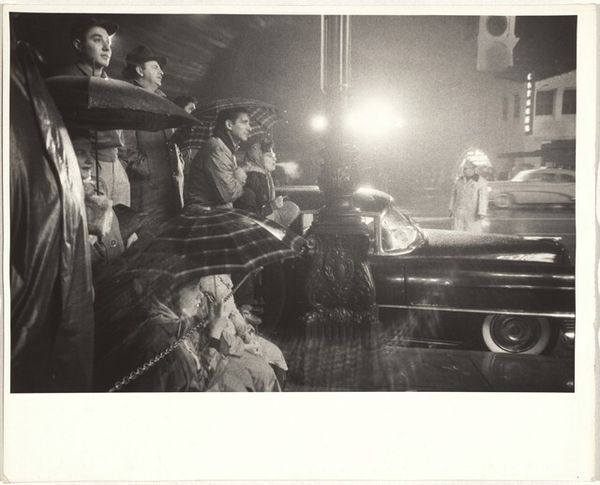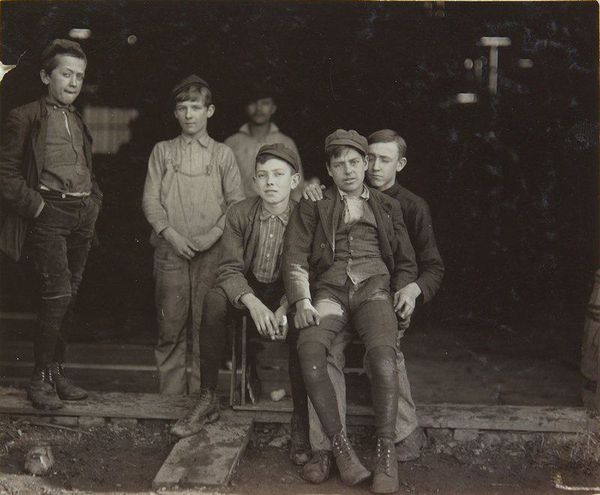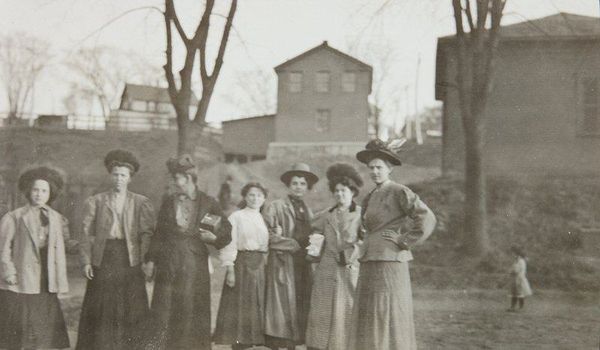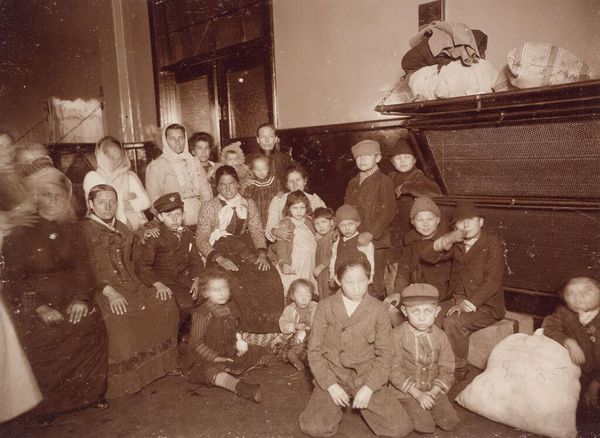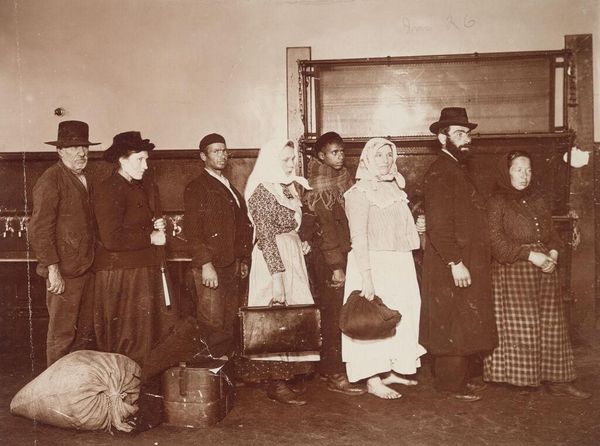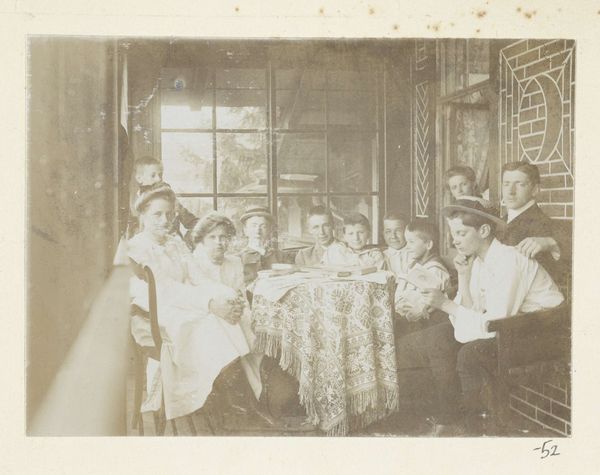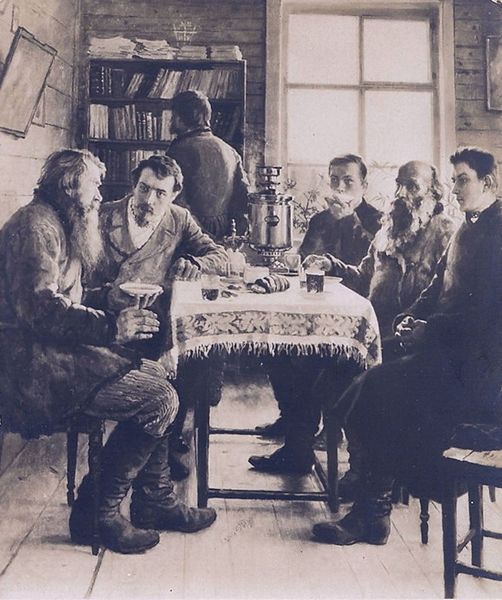
gelatin-silver-print, photography, gelatin-silver-print
#
portrait
#
gelatin-silver-print
#
photo restoration
#
social-realism
#
archive photography
#
photography
#
historical photography
#
group-portraits
#
gelatin-silver-print
#
monochrome photography
#
ashcan-school
#
realism
#
monochrome
Dimensions: 4 3/8 x 6 9/16 in. (11.11 x 16.67 cm) (image, sheet)
Copyright: No Copyright - United States
Curator: This gelatin-silver print, simply titled "Untitled," was captured in 1908 by Lewis Hine, and it’s now part of the collection at the Minneapolis Institute of Art. The piece immediately strikes me as a document of immense social import. Editor: It’s the faces that hold me, though. They’re somber, weary even. The light coming from the windows catches in their eyes, and it imbues the scene with an overwhelming sense of foreboding. What do you make of their expressions? Curator: Absolutely. Hine was a pivotal figure in the Ashcan School and a champion of social realism. His work serves as an indictment of early 20th-century labor practices. These aren’t just anonymous children; they're emblems of exploitation, rendered through the aesthetics of realism to effect real social change. The group portrait amplifies the feeling, doesn’t it? Editor: Precisely. The image calls forth so many associations – industrial toil, deprivation, exploitation of youth, even vulnerability. The caps the boys wear have an instantly recognizable, potent symbolism – a sign of their class, their role, and their age, robbed so prematurely by industry. Their bodies already molded into compliant units for this very exploitive production line… Curator: The monochromatic palette strips away any visual distractions and heightens the focus on their faces, their clothes, and their environment. It emphasizes the gravity of their situation and reinforces the photograph’s impact as a historical artifact. Editor: It's interesting that despite the candid nature of the photograph, it also evokes the feeling of an official class portrait. It captures them with the formal gravity of people much older. They gaze from beyond their years into something so far into the distance... almost like ghosts haunting from within life. Curator: That tension between candid observation and symbolic representation makes this image so potent. It allows us to both connect with these children on a human level and recognize them as symbols of larger historical forces at play. Editor: It leaves me thinking about how we visually record memories and make them symbols – like this photograph from long ago, or portraits of factory children now rendered in photographs and books on display at places like this museum today. Curator: Indeed, seeing it here at the museum highlights the role that these images play in the larger public understanding of historical and political issues. They continue to exert considerable cultural influence today.
Comments
No comments
Be the first to comment and join the conversation on the ultimate creative platform.
